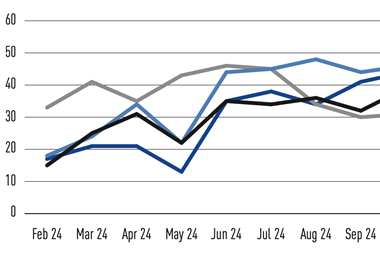During last autumn, US money manager Fidelity Investment issued the findings of research on pensions funding and liabilities from over 200 defined benefit plans. The major themes the survey found were that ‘the funding crisis had arrived, and that funds’ rate of return targets remained high. Over 50% of those survey were plans with $1bn plus in assets.
Some 50% of funds were underfunded, with public sector funds having lower funding levels than the corporate plans, with 20% of public plans more than 75% underfunded. Funding studies had been undertaken by nearly all funds in the previous 12 months, and as a result 70% expect to make contributions over the next year. This is more likely to happen where the plan is underfunded, the survey found, a not too surprising conclusion.
While around 80% of plans use a strategic and active approach when allocating assets, some 50% see their liabilities and/or funding status to be the ‘primary driver of the plan risk level’, another 25% consider ‘return targets’ to be the primary driver.
On the issue of calculation of liabilities, the median rate of return used by funds is 8.5%, in a range of 6.5 to 10.5%. A third or so of funds have recently changed the return rate and another third say they expect to so shortly. Just over half of corporate plans say they ‘strongly consider’ the impact of the rate of return on their earnings. Some 40% of funds indicated that the growth of their liabilities had outpaced their projections in the past five years.
While most funds say they would not change their strategic asset allocations in the event of a funding shortfall, one quarter say they would react by decreasing their equities and increasing fixed income. Only one in 10 funds use immunisation strategies.
Alternative investments are expected to boost returns, but so far only 40% of plans use them. But of those that do, private equity is used by 80% and only a quarter invest in hedge funds with some two thirds opting for fund of funds in preference to separate accounts. Only 40% of funds believe they can measure the risks involved in alternatives. One fifth of funds use absolute return strategies.
The survey found a strong commitment to DB plans, with 85% being ‘very committed’, employees of corporates considering them’valuable, with public sector worker considering them ‘more valuable’.












No comments yet